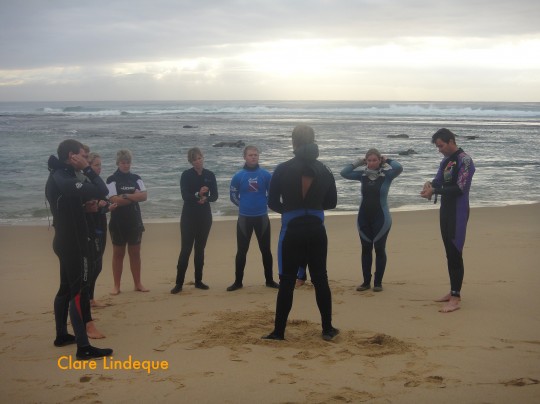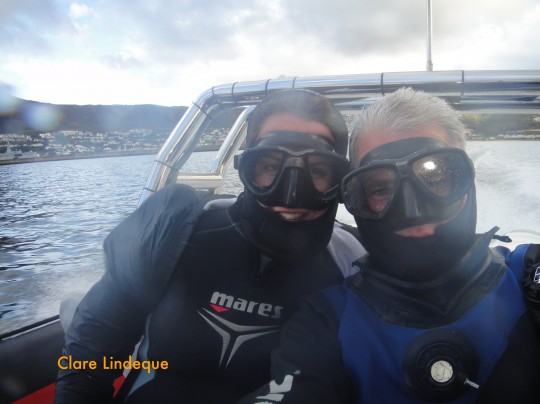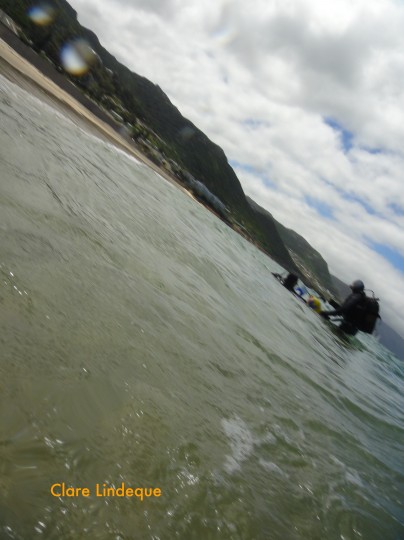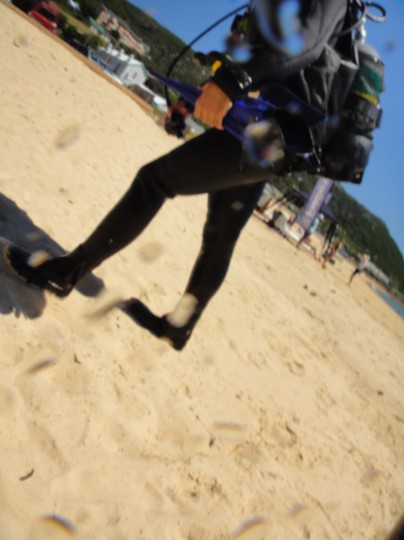
Here’s Craig Killops’s account of the dive at the Clan Stuart last Saturday. Craig (on the far left in the photo above) is just about to qualify as a Divemaster, and has just passed one of the most stressful tests any DM will have to face!
3, 2, 1…. Backward roll! Four divers perform a negative entry whilst I and a diver with drysuit remain at the surface after a positive entry. Diver with drysuit starts drifting slowly away from me, about 4 metres, whilst trying to organise himself. We give each other the okay signal and go down. I see the all too familiar silhouette , as seen on documentaries, glide between myself and the diver wearing the drysuit. I keep an eye on drysuit diver and try signal but diver too busy with equipment.
I head off to the rest of the group to signal that a shark has been spotted. Before the message has even been conveyed I see all eyes enlarged and focused behind me, the now clearly visible shark circled back showing its true inquisitive nature. Now with the group I notice that the drysuit diver is not with us and Christo also discovers this whilst we carry out a head count. We lay low on the sandy bottom at 10 metres and make our way quickly and calmly to the wreck.
As we are seeking cover in the kelp on the wreck a sillouette approaches again – it is not the shark but the drysuit diver, mid water. We signal him to stay low and to quickly come join the group as he is still oblivious to the presence of the shark. About ten seconds after he joins us the now very curious shark makes a full frontal approach towards Christo and myself ,we are up front to the left hand side of the group. When we blow bubbles (tactically or nervously…?) the shark makes a sudden turn at most two metres away from us into the green haze.
We calmed ourselves and ensured everybody was okay and accounted for. After brief comms Christo and I agree to stay low and take the group back for a shore exit roughly 150 metres away, which was probably the longest swim I have experienced mentally. Staying low on the wreck caused myself and another diver to drop our weight belts due to snagging. Big thank you to Christo for his prompt assistance in getting my weight belt back on. Not exactly the time you want to be floating to the surface.
Tucked up in a huddle formation we headed off , Christo keeping a left lookout whilst I keep a right lookout and both of ensuring the group is in close pursuit . With a 3 metre swell running into the bay there were fair sized shorebreakers on the beach which made shore exit interesting. Once we were all safely ashore we signaled the boat to say we were okay. Tony needed no explanation of what had happened – he had a front row seat to watch the dark shadow circling the group. Big thank you to shore support Clare Lindeque who arrived to transport some excited divers back to the harbour for a repetitive dive at Roman Rock, I think the Clan Stuart had provided its entertainment and blissful memories for the day.
Will definitely be keeping an extra wary eye out when diving the Clan Stuart from now on.





















